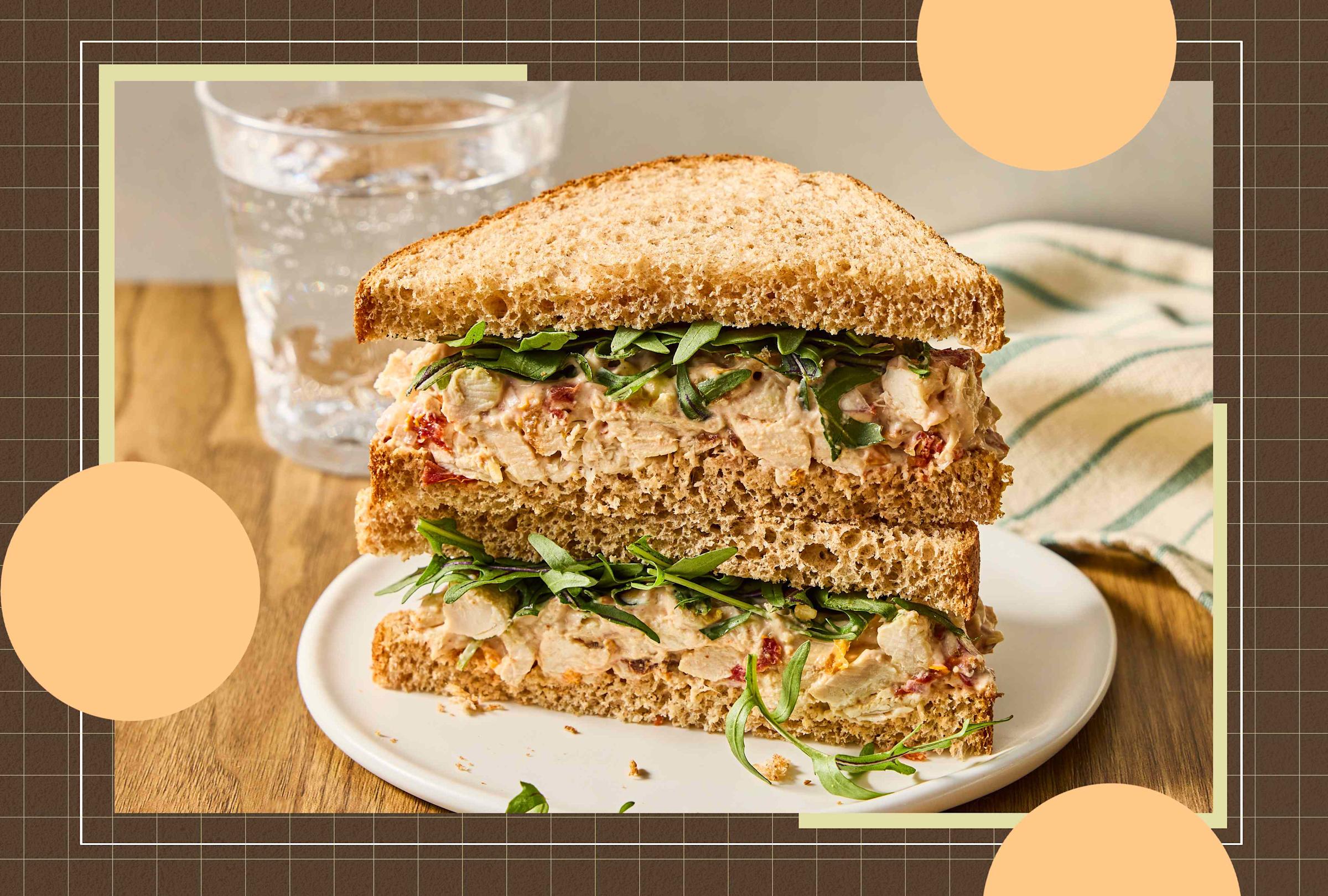Reviewed by Dietitian Jessica Ball, M.S., RD

Key Points
-
Thinly-sliced whole-wheat bread is rich in fiber, which helps you feel fuller and supports healthy digestion.
-
Choosing thinner slices lowers calories per serving, making it easier to enjoy bread while maintaining a calorie deficit.
-
Whole-wheat bread adds protein that helps preserve muscle and keeps you satisfied longer during weight loss.
I’m a dietitian and a certified bread lover—and those two things are not mutually exclusive. Bread has been bashed for being too high in carbs, containing gluten, being high in calories and it may feel especially taboo to eat if you’re trying to lose weight. “Bread doesn’t have to be off limits because weight loss is about overall calorie balance, not one single food,” shares Samantha DeVito, M.S., RD, CDN. While any type of bread can be enjoyed as part of a healthy diet in moderation, there’s one that stands out above the rest if you’re trying to hit a weight loss goal. Our pick? Thinly-sliced 100% whole-wheat bread. We talked to registered dietitians and took a look at the science behind how this bread can be helpful for your weight loss journey.
Why We Love Thinly-Sliced Whole-Wheat Bread for Weight Loss
High in Fiber
Fiber is an unsung hero when it comes to your overall health, but it’s especially key for weight loss. “Whole grain bread provides more fiber compared to refined-grain bread,” notes Macy Diulus, RD, LD, M.P.H., CDCES. “That fiber helps us feel fuller and signals to our brain that we are satiated. When we eat bread without fiber and without pairing it with other key macronutrients like protein and fat, we tend not to feel full, which can lead to eating larger portions and excess calories.”
Whole-grain bread is made with the entire grain—including the bran, germ and endosperm—and the fiber has not been stripped away. When researchers gave people with obesity either whole grains or refined grains, they found that the whole grain group lost significantly more weight over eight weeks. It’s unclear exactly why whole grains were more helpful, but the fiber found in them is linked with increased satisfaction, decreased energy intake and more mouth satisfaction as you chew—these grains have some bite to them.
Fiber can even help with weight loss regardless of calorie and macronutrient intake (although those are still important factors). One study looked at people who lost weight and their fiber intake was most strongly associated with weight loss.
The bad news? Over 90 percent of Americans don’t eat enough fiber. The 2020-2025 Dietary Guidelines for Americans recommend about 25 grams per day for women and 38 grams for men. The good news? Whole-wheat thinly-sliced bread delivers about 4 to 6 grams in two slices to help you get on your way to hitting your fiber goals. It can vary by brand, so be sure to check the nutrition label on the bread you choose.
Lower in Calories
Fiber certainly is important when it comes to weight loss, but calories also play an important role. “Weight gain is often a result of excess calorie intake, not from eating or avoiding one specific food or food group,” shares Jaime Bachtell, Shelbert, RDN.
Many studies come to the conclusion that no one diet is better than another for weight loss. That means that you could eat fewer carbs or intermittently fast, but it mostly comes down to how you can sustain a calorie deficit. Eating fewer calories than your body expends is the most important thing when it comes to weight loss.
That’s where thinly-sliced bread has an edge. You still can enjoy sandwiches and toast, but because the bread is slightly smaller it has fewer calories. Thinly-sliced bread has about 60 to 70 calories per slice, compared to standard bread which can have between 120 and 140 calories per slice.
That could mean a sandwich with thinly-sliced bread would have around 100 fewer calories without feeling like you’re missing anything. Adds Diulus, “Bread comes in various sizes and slices of different thicknesses, so understanding the nutrition facts helps us determine the right quantity of bread for a balanced meal.”
Packed with Protein
While no bread is going to compare to the protein content of foods like tofu, chicken or fish, whole grains have more protein than refined grains. “Choosing a bread with a higher protein content is a bonus for weight loss. Protein increases satiety, helping you to feel fuller longer. It also helps preserve lean muscle mass during weight loss—an important factor for maintaining a healthy metabolism,” states Bachtell-Shelbert. Protein takes more energy for your body to digest than carbohydrates and fat, and can help keep you full. It may also help your body keep your muscle, or lean mass, which is important for overall health and weight loss.
Thinly-sliced whole-wheat bread will deliver six grams of protein per two slices, which is the same amount of protein found in one large egg. Plus, adding another source of protein to your bread—like nut butter or tuna salad—will help make your entire meal more satisfying.
Other Tips for Healthy Weight Loss
Sustainable weight loss isn’t just about the type of bread you choose. Aim to eat lots of fruits and vegetables, move your body, limit stress in your life and try these simple, science-backed tips to help you on your weight-loss journey.
-
Get your zzz’s. “Getting less than the recommended 7 to 9 hours per night is a risk factor for obesity. Prioritizing sleep supports a healthy metabolism and regulates appetite,” shares Bachtell-Shelbert. Aim to go to bed at the same time each night and develop a sleep routine.
-
Look beyond the scale. Diulus works with her clients to, “not to focus too much on the number on the scale, as it doesn’t give the full picture of body composition. Instead, consider tracking other health factors alongside weight, such as sleep quality, stress levels, energy levels and lab values like lipids and blood sugar.”
-
Take small steps. Sustainable changes are key for weight loss. Instead of a big overhaul to your diet, start small and build. DeVito notes, “I aim to educate on focusing on small changes, like adding Greek yogurt to breakfast, beans to a salad, or eggs to toast, which can make a big difference in appetite control and long-term success.”
Our Expert Take
Thinly-sliced whole-wheat bread takes the cake when it comes to choosing a bread for weight loss. It delivers fiber, is lower in calories and packs some protein to help keep you full and energized while still aligning with your goals. If you’re a bread lover, remember that eliminating your favorite foods isn’t always a lasting strategy. Diulus adds, “Bread provides carbohydrates, which are a necessary macronutrient for our energy and metabolism. Instead of totally avoiding bread (which usually backfires and leads to wanting it more), try choosing whole-grain breads with a higher fiber content.” Remember that long-term weight loss is about more than just the bread you choose. Getting enough sleep, making small changes, keeping your focus off the scale and an overall balanced diet are important, too.
Read the original article on EatingWell
Yahoo News – Latest News & Headlines
Read the full article .


